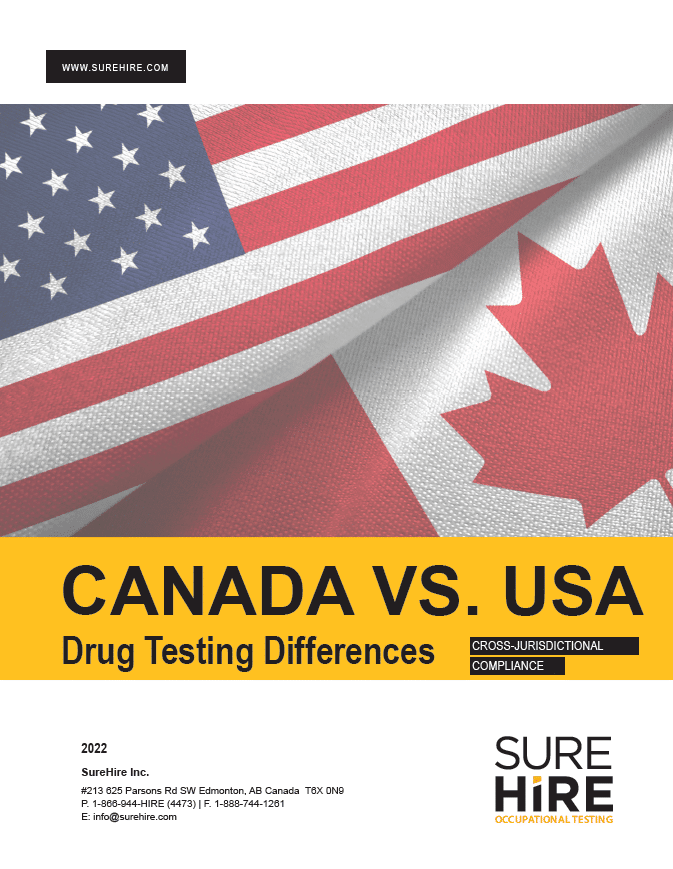TAKEAWAY: In this blog post, we’ll provide an overview of the safety training requirements in the transportation industry and highlight some essential resources to help you meet those requirements.
As a Human Resources Manager in the Transportation industry, you know that safety is of the utmost importance. Human factors account for a disproportionate number of accidents in the transportation industry. Safety training is crucial to compliance, but it is also essential to preventing these accidents and injuries.
In order to ensure a safe working environment on your work sites, it’s essential to be familiar with the safety training requirements in your state or province. In the United States and Canada, there are several safety training requirements that transportation companies must follow to comply with regulations and standards.
United States
In the U.S., the Department of Transportation (DOT) is responsible for setting minimum standards for safety training in the transportation industry. However, many of its operating administrations, such as the Federal Aviation Administration (FAA), the Federal Motor Carrier Safety Administration (FMCSA) and the Federal Railroad Administration (FRA), also have training requirements specific to their industries.
Operator Training
Companies governed by DOT must provide their operators with training specific to the administration they are employed with. For example, those governed by the FMCSA must deliver training that teaches operators about the safe operation of commercial motor vehicles (CMV), including handling emergencies, performing pre-trip inspections, and complying with federal regulations.
Hazardous Materials Training
Anyone involved in transporting hazardous materials must receive specialized training in handling and transporting these materials safely. This training must comply with the Hazardous Materials Regulations (HMR) established by the Pipeline and Hazardous Materials Safety Administration (PHMSA).
Hours of Service Training
This training is specific to certain industries. In all cases, drivers must receive training on the hours-of-service regulations, which limit the number of hours they can drive in a day or week. This training helps ensure that drivers are well-rested and alert while operating everything from aircraft to trains.
Drug and Alcohol Awareness Training
All employees and contractors of companies governed under DOT must receive training on the dangers of drug and alcohol use while driving, as well as the consequences of violating federal drug and alcohol testing regulations.
Compliance Training
Carriers must train their drivers on federal regulations and safety standards, including the FMCSA regulations, the Commercial Driver’s License (CDL) requirements, and the Safety Measurement System (SMS). Similar provisions are in place for workers governed by other administrations.
Defensive Driving
Defensive driving training is another specific requirement of DOT that is primarily targeted toward commercial drivers governed by the FMCSA.
In all cases, the training must be provided by a qualified trainer with knowledge and experience in the specific training area. The trainer must also communicate the training effectively to the employees.

Canada
Transport Canada regulates the transportation industry in Canada and establishes safety standards and regulations for all modes of transportation. The Canadian Centre for Occupational Health and Safety (CCOHS) also provides guidance on safety training requirements for workers in the transportation industry. These requirements include:
Operator Training
All drivers of commercial vehicles and operators in other modes of transportation must receive training on the safe operation of their vehicles, including how to perform pre-trip inspections, handle emergencies, and comply with federal regulations.
Hours of Service Training
Drivers and operators must receive training on the hours of service regulations, which limit the number of hours they can drive in a day or week.
Defensive Driving Training
Commercial drivers must receive training on defensive driving techniques, which can help prevent accidents and injuries on the road.
Dangerous Goods Training
Drivers, operators and others who work in the transportation industry and transport dangerous goods must receive specialized training in handling and transporting these materials safely. This training must comply with the Transportation of Dangerous Goods (TDG) regulations established by Transport Canada.
Workplace Hazardous Materials Information System (WHMIS) Training
Drivers, operators and others who work in the transportation industry in Canada must receive training on the Workplace Hazardous Materials Information System (WHMIS). This is a hazard communication system used in Canada to provide information on hazardous materials and how to handle them safely.
It’s important to note that Canadian transportation companies that operate in the U.S. are responsible for meeting DOT regulations for safety training as well as Canadian regulations. Specific provinces may have additional training requirements, so it is a good idea to check with the provinces you operate in before designing your safety training.
In both the United States and Canada, safety training is a critical requirement for workers in the transportation industry. These training requirements help ensure drivers are aware of federal regulations, safety standards, and best practices for the safe operation of their vehicles. By complying with these requirements, transportation companies can reduce the risk of accidents and injuries and create a safer workplace for their employees and the public.
Resources
The U.S. Department of Transportation (DOT) For additional safety training regulations, check out the individual operating administration pages under the About tab.
The Canadian Transportation Agency hosts national regulations for safety training. There are also specific pages for individual industries listed on the main page.
SureHire offers online industry-specific training for both U.S. and Canadian-based transportation companies. All are conducted by certified and experienced trainers.
The Occupational Safety and Health Administration site is another good resource for the latest U.S. news and recommendations for safety training in transportation.
For similar news within Canada, the Canadian Centre for Occupational Health and Safety is another excellent resource.
You May Also Be Interested In…
- Do You Have Reasonable Suspicion?
 Employers cannot initiate reasonable suspicion testing without first going through the 5-step process. Reasonable suspicion training provides critical information about how to initiate reasonable suspicion testing, including the 5-step process and other tools that employers can use to help manage the misuse of alcohol and drugs in the workplace.
Employers cannot initiate reasonable suspicion testing without first going through the 5-step process. Reasonable suspicion training provides critical information about how to initiate reasonable suspicion testing, including the 5-step process and other tools that employers can use to help manage the misuse of alcohol and drugs in the workplace. - An Employer’s Guide: What You and Your Employees Need to Know About DOT Drug & Alcohol Testing
 When implementing or maintaining DOT Drug & Alcohol testing, there are key areas that employers should consider.
When implementing or maintaining DOT Drug & Alcohol testing, there are key areas that employers should consider. - SureHire Occupational Testing Acquires COHR Health: A Positive Step Towards Safe, Healthy, Productive Workforces and Communities
 We are thrilled to announce that today, May 6, 2024, SureHire Occupational Testing has officially acquired COHR Health, a well-known leader in occupational health services. Read on…
We are thrilled to announce that today, May 6, 2024, SureHire Occupational Testing has officially acquired COHR Health, a well-known leader in occupational health services. Read on… - Occupational Testing Use Case – Mining
 In this case study, we will explore how mining companies can use various types of occupational tests to reduce Total Recordable Incident Rates (TRIR) long term.
In this case study, we will explore how mining companies can use various types of occupational tests to reduce Total Recordable Incident Rates (TRIR) long term. - 9 Strategies to Keep Workers Cool on Drilling Sites During Hot Summer Months
 This article delves into strategies to keep workers cool and safe on drilling sites during the hot summer months.
This article delves into strategies to keep workers cool and safe on drilling sites during the hot summer months. - Hearing Conservation Basics: How to Manage Occupational Noise
 Learn how to proactively mitigate occupational noise risks and help prevent NIHL among workers.
Learn how to proactively mitigate occupational noise risks and help prevent NIHL among workers.

